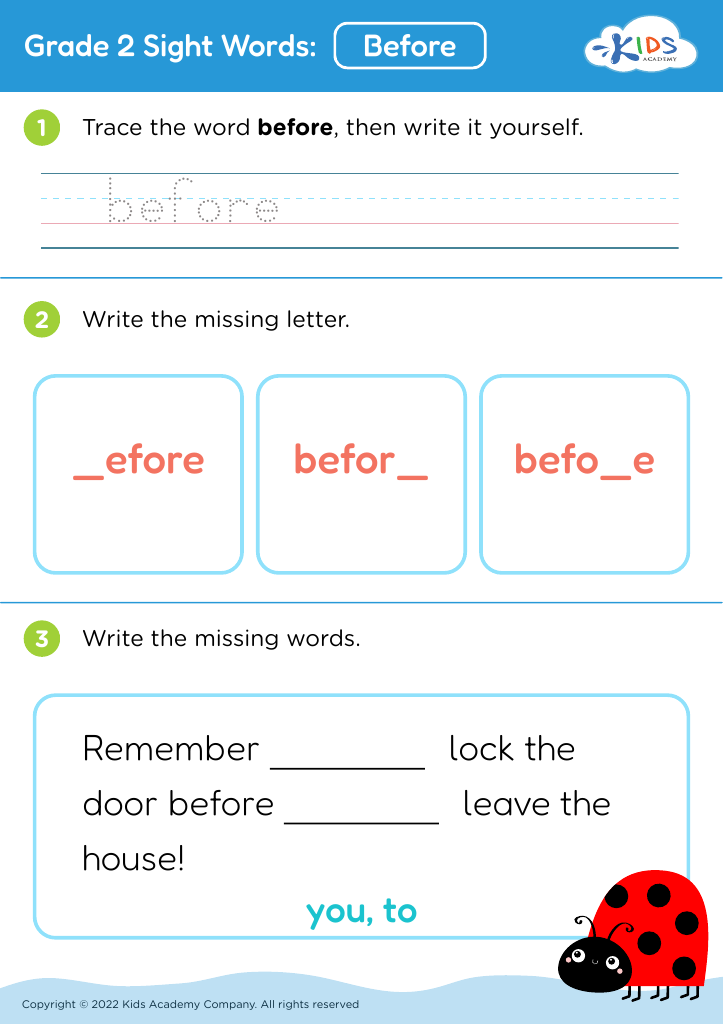Practice simplifying fractions Worksheets for Kids
1 filtered results
-
From - To
Question/Answer
What are some effective activities to train students’ Practice simplifying fractions skill when teaching them about Sight Words?
To train students in simplifying fractions while teaching them about Sight Words, you can design flashcards that pair each sight word with a fraction to simplify, create bingo games with sight words and fractions on the boards, or organize matching activities where students match simplified fractions to their unsimplified counterparts next to sight words.
What does the Practice simplifying fractions skill mean when it comes to Grade 2 Sight Words learning?
The "Practice simplifying fractions skill" is not directly related to Grade 2 Sight Words learning. Grade 2 Sight Words focus on recognizing and reading common words by sight, which is a foundational literacy skill. Simplifying fractions, on the other hand, is a mathematical skill typically introduced at a higher grade level, involving reducing fractions to their simplest form.
Why is the Practice simplifying fractions skill important for Grade 2 students?
The practice of simplifying fractions is important for Grade 2 students because it lays the foundation for understanding fractions, a key concept in mathematics. It helps in developing their analytical thinking and problem-solving skills. Simplifying fractions makes math problems easier to manage, promotes number sense, and prepares students for more complex mathematical operations involving fractions in higher grades.












